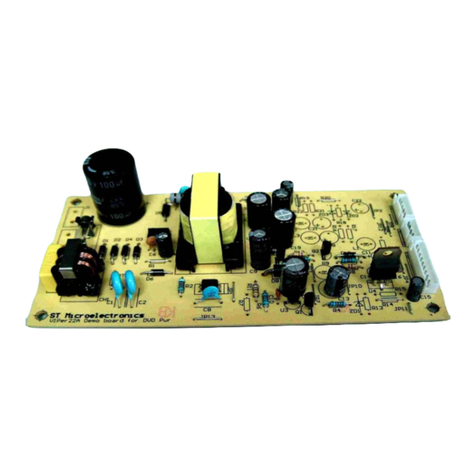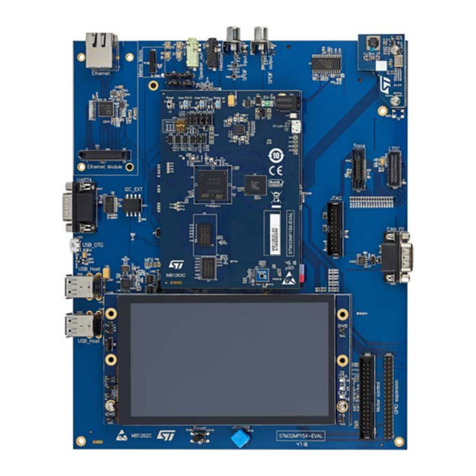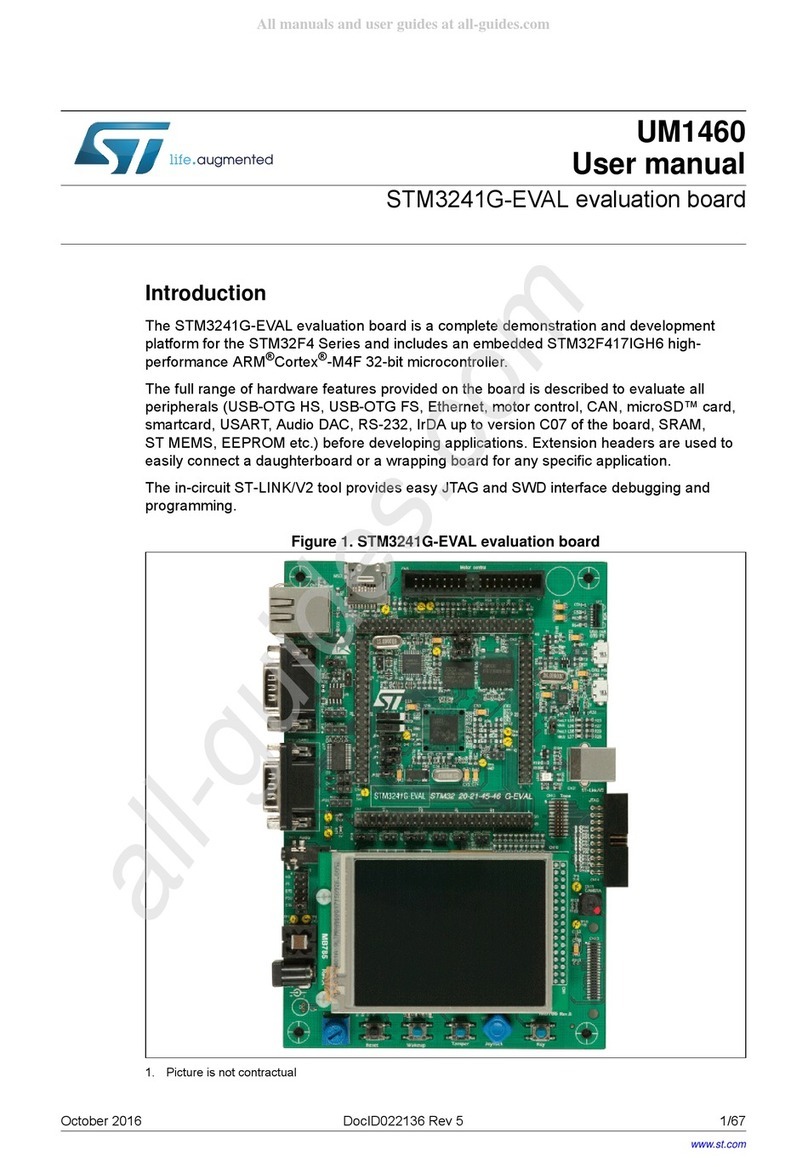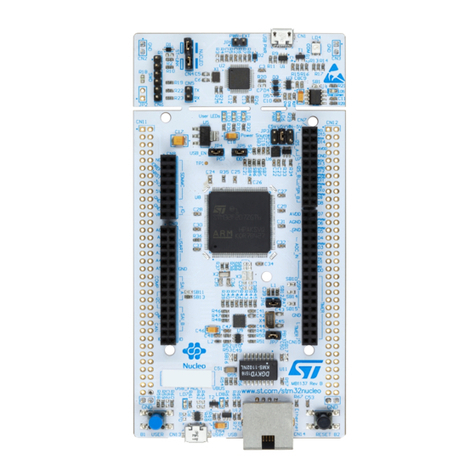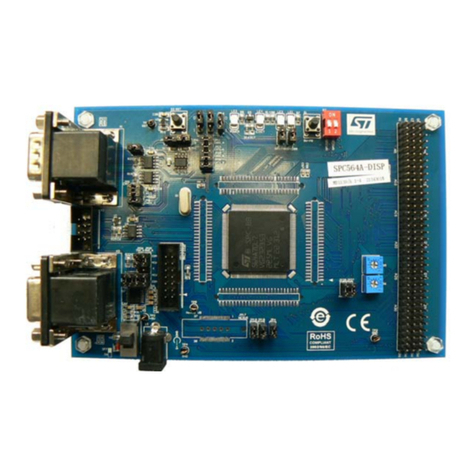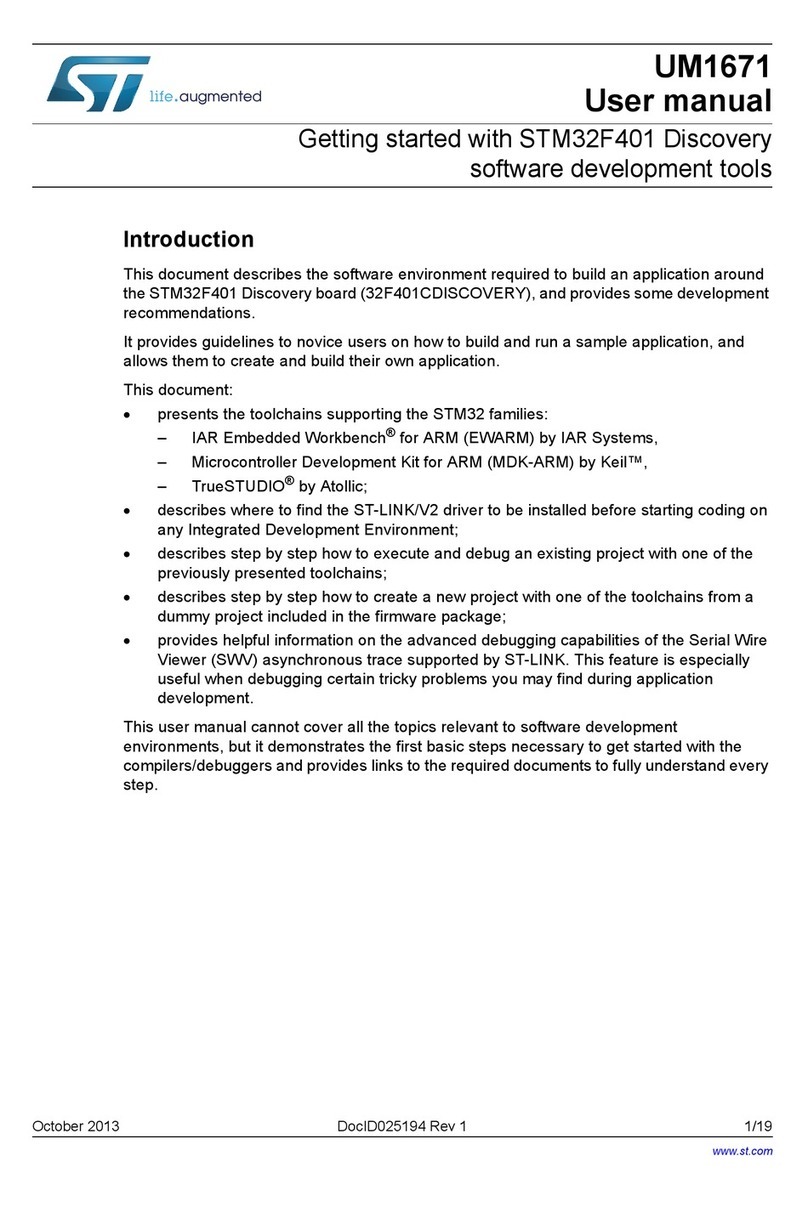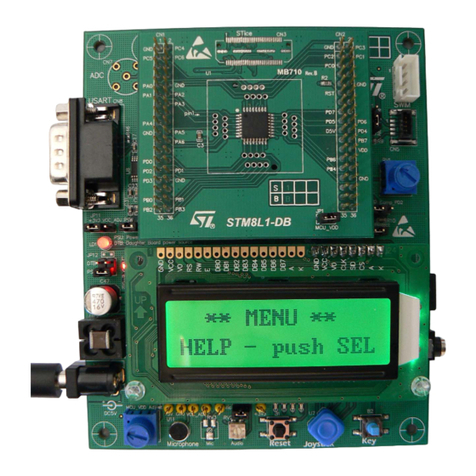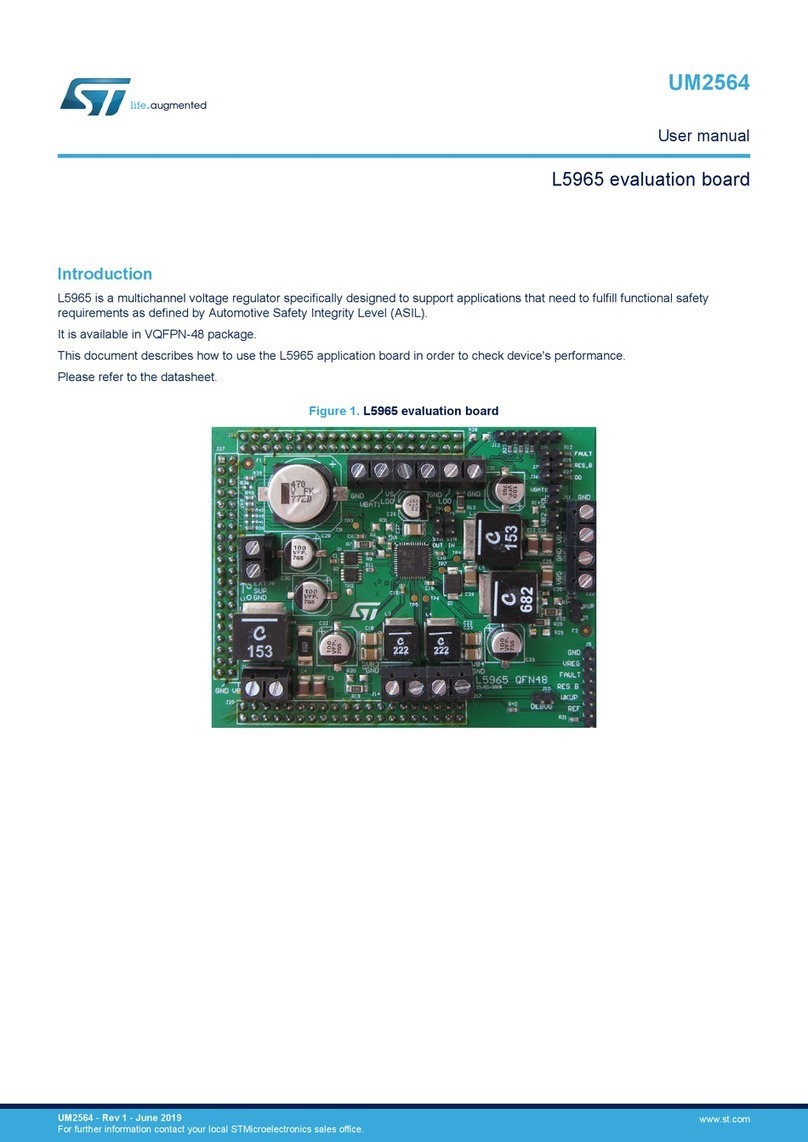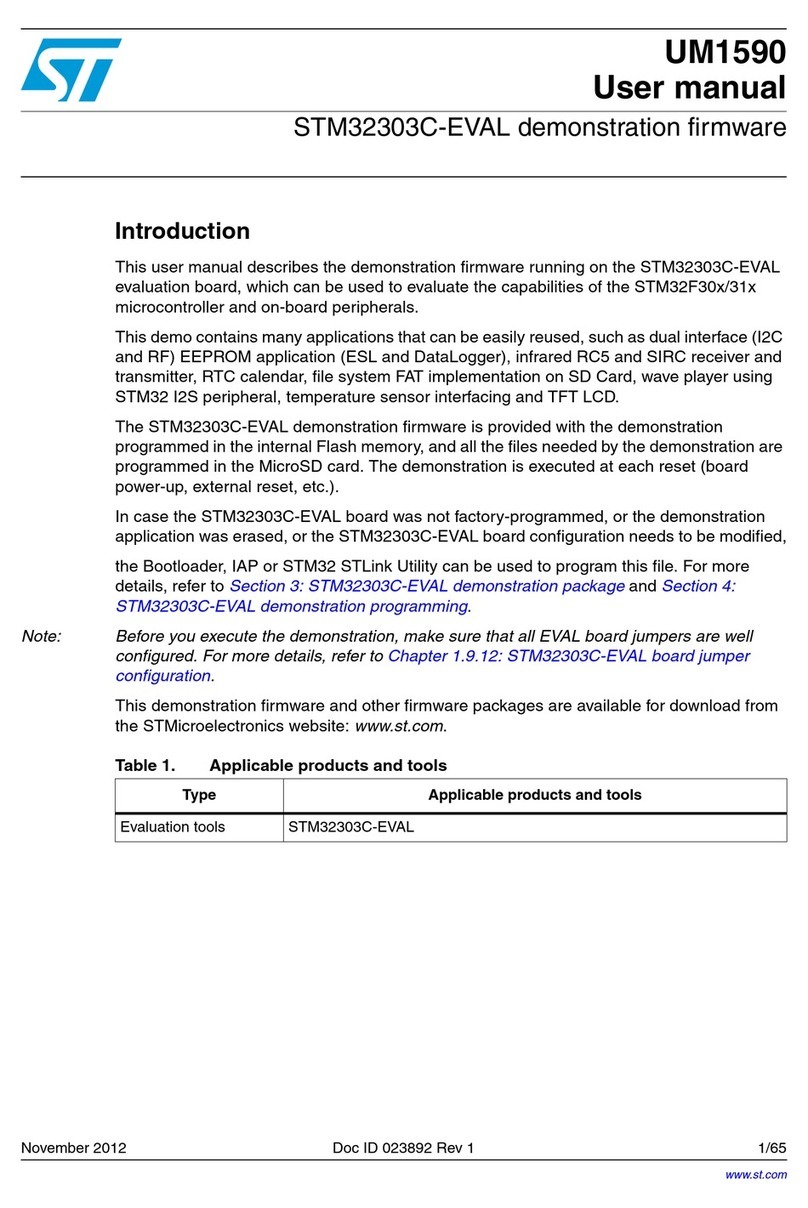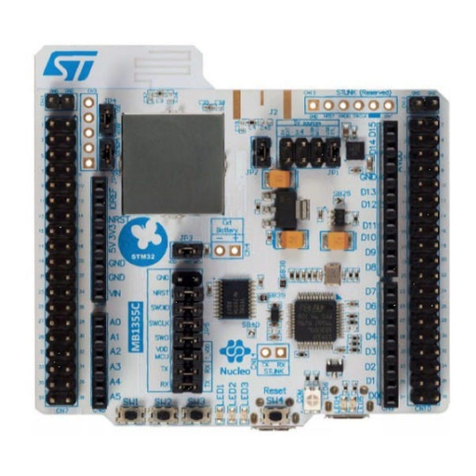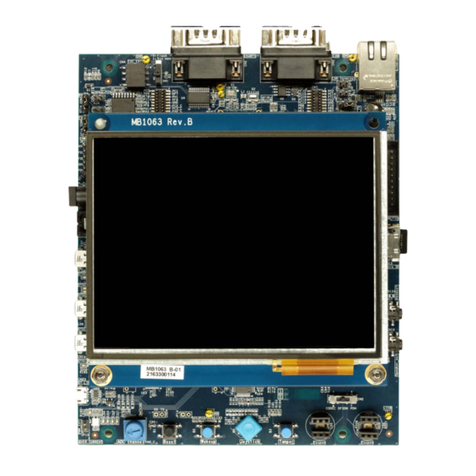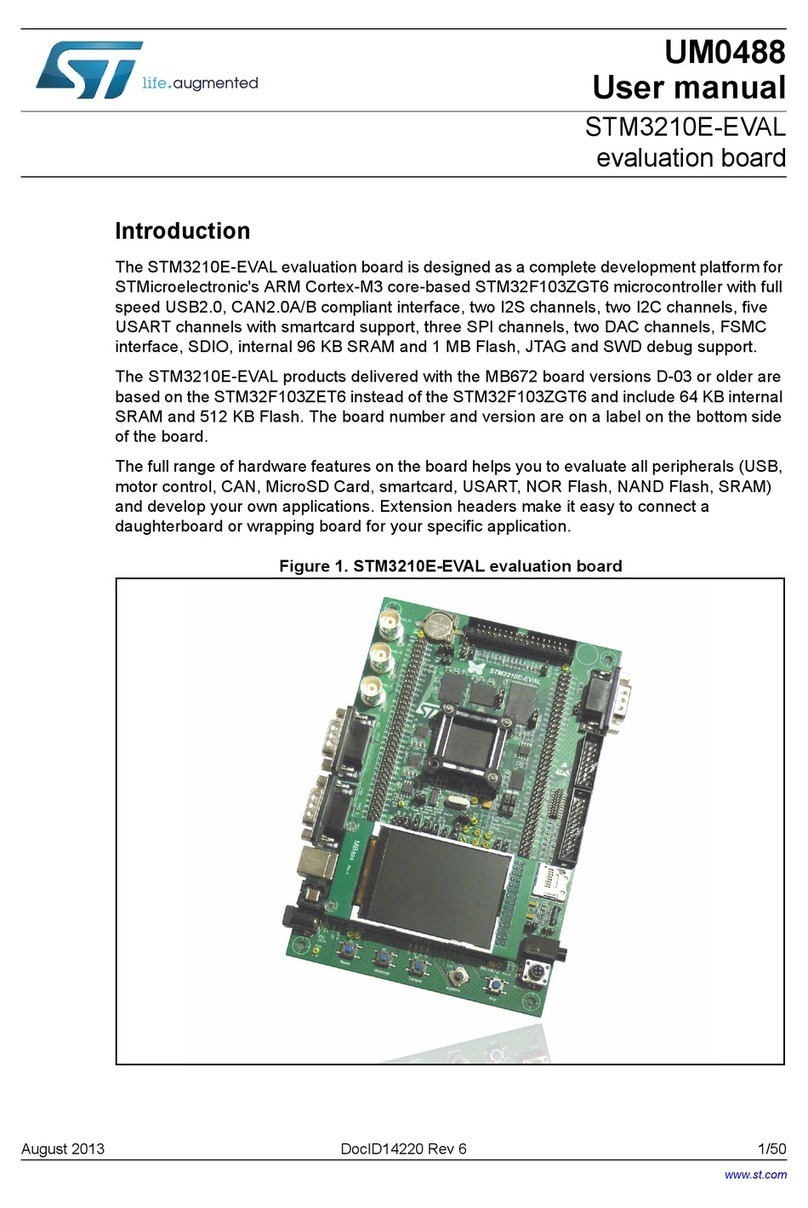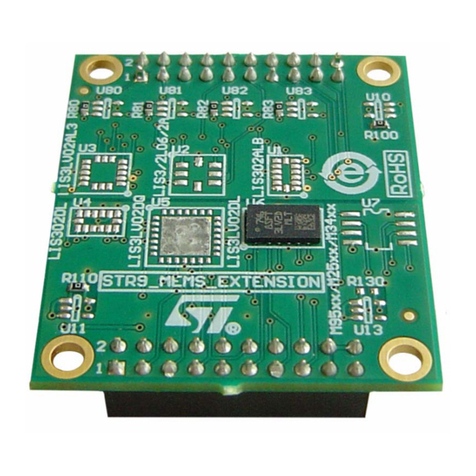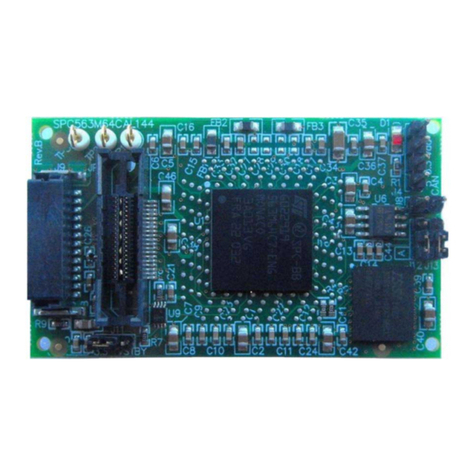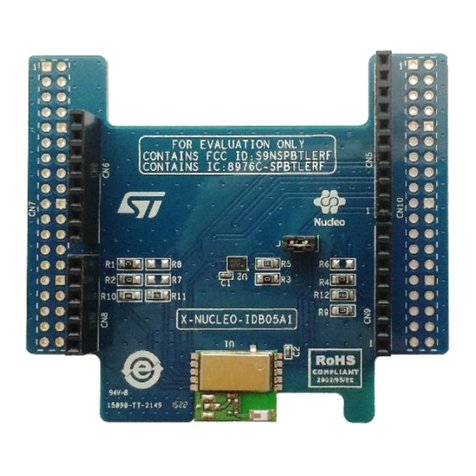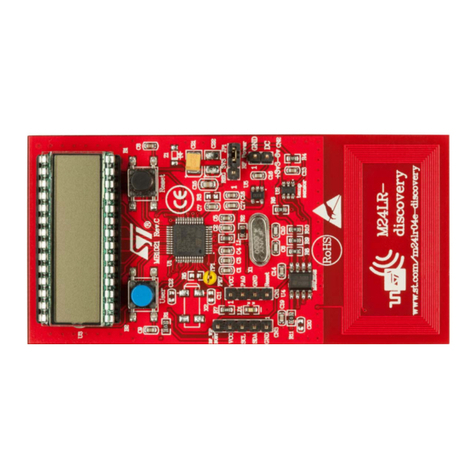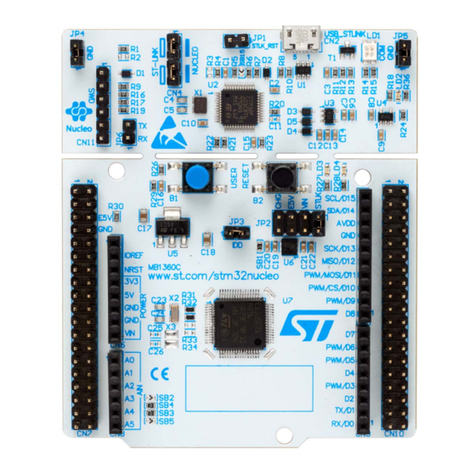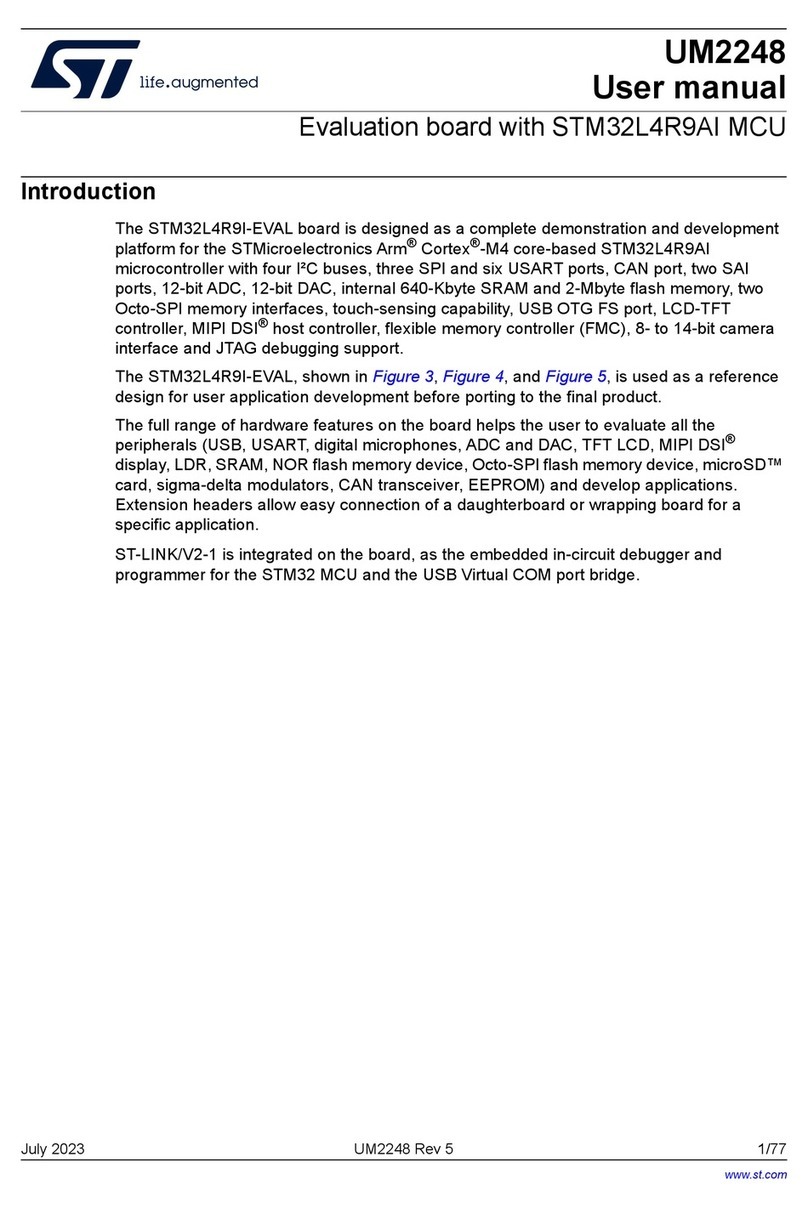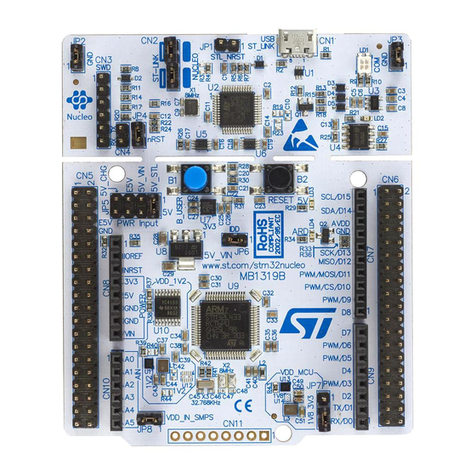
2Ordering information
To order the B-L4S5I-IOT01A Discovery kit for the IoT node, refer to Table 1. Additional information is available
from the datasheet and reference manual of the target STM32.
Table 1. Ordering information
Order code Board reference Target STM32
B-L4S5I-IOT01A MB1297 STM32L4S5VIT6U
2.1 Product marking
Evaluation tools marked as “ES” or “E” are not yet qualified and therefore not ready to be used as reference
design or in production. Any consequences deriving from such usage will not be at ST charge. In no event, ST will
be liable for any customer usage of these engineering sample tools as reference designs or in production.
“E” or “ES” marking examples of location:
• On the targeted STM32 that is soldered on the board (For an illustration of STM32 marking, refer to the
STM32 datasheet “Package information” paragraph at the www.st.com website).
• Next to the evaluation tool ordering part number that is stuck or silk-screen printed on the board.
This board features a specific STM32 device version, which allows the operation of any bundled commercial
stack/library available. This STM32 device shows a "U" marking option at the end of the standard part number
and is not available for sales.
In order to use the same commercial stack in his application, a developer may need to purchase a part number
specific to this stack/library. The price of those part numbers includes the stack/library royalties.
2.2 Codification
The meaning of the codification is explained in Table 2.
Table 2. Codification explanation
B-L4S5I-IOT01A Description B-L4S5I-IOT01A
B Discovery kit with a variety of sensors Sensor node
L4S5 MCU product line in STM32 32-bit Arm Cortex MCUs STM32L4R5/S5 in the STM32L4+ Series
ISTM32 Flash memory size:
• I for 2 Mbytes 2 Mbytes
IOT Dedicated to IoT applications Discovery kit for IoT applications
The order code is mentioned on a sticker placed on the top or bottom side of the board.
UM2708
Ordering information
UM2708 - Rev 1 page 3/43
